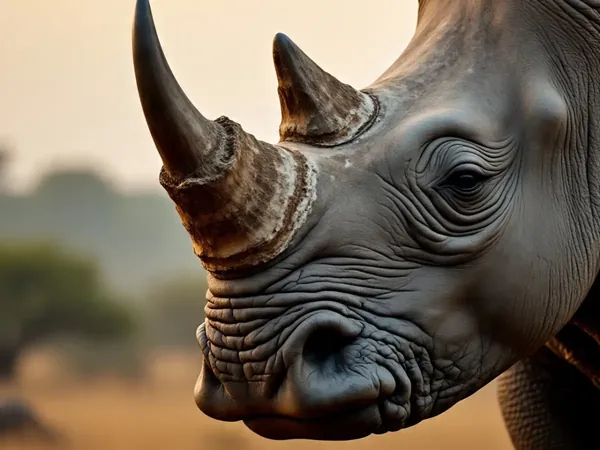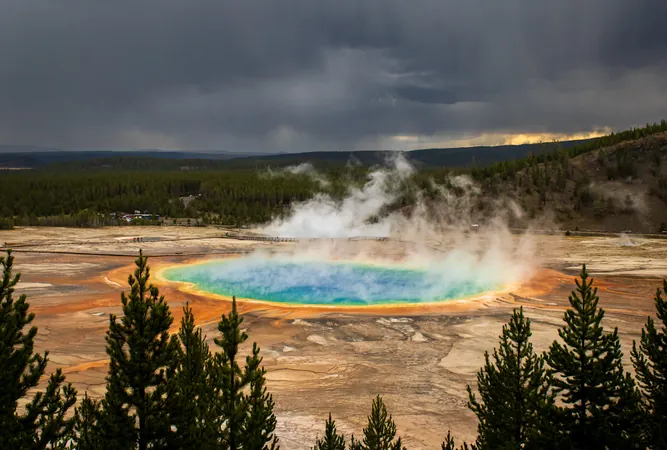
Unveiling the Ancient: Oldest Protein Sequenced from a 24-Million-Year-Old Rhino Tooth in the Arctic
2025-07-16
Author: Liam
A Breakthrough Discovery in Paleoproteomics
In a remarkable scientific achievement, researchers have successfully recovered the most ancient proteins ever found, extracted from a fossilized tooth of a rhinoceros unearthed in the Canadian Arctic. At an astonishing 24 million years old, this tooth contains proteins that are a staggering ten times older than the oldest known DNA, marking a new milestone in paleontological studies.
Unlocking the Secrets of Ancient Life
Ryan Sinclair Paterson, a postdoctoral researcher at the Globe Institute at the University of Copenhagen and leader of the study, describes tooth enamel as a "vault" that preserves these ancient proteins over geological timescales due to its incredible durability. By "unlocking this vault," scientists aim to use ancient proteins to provide insights akin to what ancient DNA has revealed about our past, such as human evolution and lost civilizations.
The Advantages of Protein Analysis
Unlike fragile DNA, which degrades swiftly, proteins can endure within fossils for millions of years, granting researchers valuable information about the evolutionary lineage, diet, and even the sex of the extinct creature. Enrico Cappellini, a fellow researcher and professor at the University of Copenhagen, emphasizes the necessity of confirming that this discovery isn't just a rare find but the beginning of a new avenue in paleontological research. He envisions applying this technology to investigate even older fossils, potentially including dinosaurs.
Comparing Ancient and Modern Rhinos
In collaboration with colleagues from the University of York and the Canadian Museum of Nature, Cappellini and Paterson analyzed sequences from seven proteins within the fossilized rhino tooth. This analysis allowed them to compare these sequences with those of extant and extinct relatives, revealing that this particular rhino diverged from its lineage around 41 to 25 million years ago. Paterson remarked on the diversity of ancient rhinoceros species, highlighting oddities such as the woolly rhinoceros and the legendary Siberian unicorn.
The Future of Fossil Protein Research
This groundbreaking study, published in the prestigious journal Nature, opens up exciting prospects for future research in paleoproteomics. It not only underscores the remarkable resilience of biomolecules but also sets the stage for further exploration of ancient proteins, which may unlock secrets of life forms from eras long past. With the potential to extract and analyze proteins from fossils in diverse and unexpected environments, such as tropical regions, the future of understanding ancient life looks incredibly promising.









 Brasil (PT)
Brasil (PT)
 Canada (EN)
Canada (EN)
 Chile (ES)
Chile (ES)
 Česko (CS)
Česko (CS)
 대한민국 (KO)
대한민국 (KO)
 España (ES)
España (ES)
 France (FR)
France (FR)
 Hong Kong (EN)
Hong Kong (EN)
 Italia (IT)
Italia (IT)
 日本 (JA)
日本 (JA)
 Magyarország (HU)
Magyarország (HU)
 Norge (NO)
Norge (NO)
 Polska (PL)
Polska (PL)
 Schweiz (DE)
Schweiz (DE)
 Singapore (EN)
Singapore (EN)
 Sverige (SV)
Sverige (SV)
 Suomi (FI)
Suomi (FI)
 Türkiye (TR)
Türkiye (TR)
 الإمارات العربية المتحدة (AR)
الإمارات العربية المتحدة (AR)